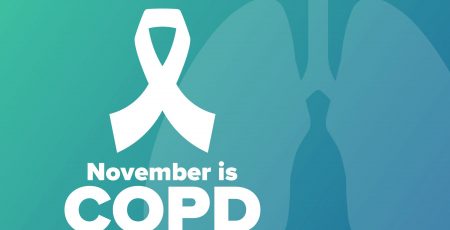
25 Jul The Rise of COPD in Rural America
Chronic obstructive pulmonary disease, or COPD, is a progressive disease of the lungs that causes shortness of breath. This debilitating disease literally takes your breath away and causes shortness of breath while it causes constant changes in breathing. In this country alone, 160,000 people die from the disease each year. With a noticeable number of cases in rural America, COPD has become a health disparity in economically deprived rural areas.
In fact, Dr. Meridith McCormack of Johns Hopkins University states, “Living in a rural area increases the risk of COPD by 16% compared to the 8% national average.” However, the struggle remains in research funding. Despite being the third leading cause of death to Americans, it ranks 16 when it comes to research funding.
In this video, The Challenges of Chronic Disease in Rural Areas: Chronic Obstructive Pulmonary Disease (COPD), news personality Ted Koppel narrates a cause deep to his heart. His wife, Grace Anne Dorney-Koppel, President of Dorney-Koppel Foundation, struggles with COPD every day. Her words resonate with many when she says, “We need equivalent access to care, equivalent access to diagnosis. I think we have moved to a point that it is so clear that there is an epidemic and people are struggling for breath in rural America and they are not being diagnosed and their dying.”
COPD is considered to be preventable. Often referred to as the “don’t tell disease,” patients don’t tell providers about the symptoms and providers many times fail to ask. Education on what causes COPD can help patients understand what is needed to preserve their respiratory health. Health professionals should discuss factors like cigarette smoking, air pollution, and even dust and fibers in the workplace, which are all common in rural communities. It is important to diagnose people early in their disease so that lung function can be preserved. This means educating patients who complain of respiratory symptoms.
Healthcare professionals need to make sure that their patients know how and when to use their inhaled medications and oxygen when needed to treat their COPD. The one treatment that almost always improves the quality of life for COPD patients is pulmonary rehabilitation. However, pulmonary rehab facilities are located in urban centers which obviously presents challenges to the rural population.
Chronic obstructive pulmonary disease, or COPD, is considered a preventable cause of death. COPD treatments are available, but research and collaborative stakeholder efforts are needed to impact the disease.
Learn more about living with COPD.





Rob Baker
Posted at 23:01h, 17 AugustI have COPD
We spend 7 months in Denver and 5 months in Florida a year.
My Denver oxygen scrip. calls for 2 liters at night 2 liters resting or idle and 3 liters during activity.
What will be my oxygen requirement in Florida?
PERF
Posted at 20:36h, 20 AugustDear Rob,
We usually get the opposite question. That is, when flying from sea level, what will an oxygen requirement be in Denver, or flying across country in a plane pressurized to 8,000 feet? The answer to your question is different because, in this case, you will be at sea level for 5 months rather than 5 hours! An oxygen saturation of about 98% is the norm at sea level, but in Denver, a decrease to about 92% saturation is normal. The answer for you, with your diagnosis of COPD is, can’t be predicted with certainty. It depends on several factors and your pulmonologist is the one to give you that information.
Your pulmonologist will want to know your history, and get copies of the tests that showed why you needed oxygen in the mile high city, with its altitude of 5280 feet (or 1609 meters) above sea level. Be sure you have copies of all these tests, and of your history and physical, before you leave. Ask your current physician to suggest some possible pulmonologists in your new area, based on that new doctor’s educational background and other basic information easily available on line. You could do some preliminary internet searches of your own.
Ask your current physician to suggest what your oxygen prescription should be until you see your new pulmonologist. You almost certainly will require less oxygen in Florida, though oxygen requirements during sleep may be a different issue. How much less oxygen you finally need will up to your new pulmonologist to decide after seeing the results of the tests that probably will be ordered.
You have chosen two wonderful places to live! Best wishes for good health in both of them,
Mary Burns, RN, BS
Roslia Santamaria
Posted at 22:57h, 24 NovemberHey there, You have done a fantastic job. I’ll definitely digg it and personally suggest to my friends. I am confident they will be benefited from this web site.
PERF
Posted at 15:19h, 26 NovemberDear Roslia,
Thanks for your kind words about our site. We are pleased that you think your friends also would benefit from some of the many articles on this site. We have worked hard to make it useful.
Best wishes,
Mary Burns RN, BS
R3 Stem Cell
Posted at 00:13h, 17 AugustCOPD is a severe disease and individuals who thinks it cannot be cured, should give a chance to stem cell therapies, have been very helpful for patients and most important they don’t have any side-effects.